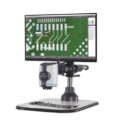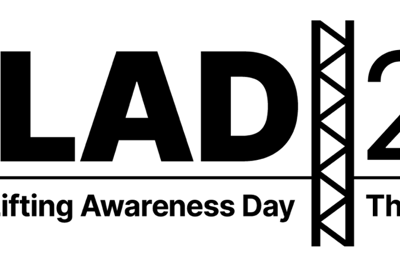As scientists and engineers develop new technologies to boost patient outcomes, we are seeing pharmaceutical manufacturing rapidly advance.
The industry is one in which technology can, and is playing, a huge part in and the technologies are having several benefits and making for an efficient and cost-effective approach to medicinal production. The Covid-19 pandemic thrust the pharmaceutical industry into the limelight across the globe, firstly with the need for treatments and then the transition into the development of a vaccine.
In 2022, for a drug to enter the market, the costs behind its approval averages US$2 billion. The need to accelerate technology to drive down costs is essential, and innovation is key. Here we look at the technology which is allowing pharmaceutical manufacturing to be revolutionized.
Technology and Covid-19
In 2020, the devastating worldwide outbreak of coronavirus saw millions of people infected – many of which sadly lost their lives. As the virus swept across the globe, there was an urgent need for treatments and vaccinations to be developed, against a virus that was in the early stages, unknown. The development of the Vaccine against the illness saw the first humans outside of a trial setting to be given a vaccine that harnesses “mRNA” technology. The vaccine development has opened the door for future vaccines against illnesses which otherwise would have not been possible. This technology had never been used in a vaccine before. The pandemic proved that a technology that scientists had previously developed could be used, and in future, treatments and vaccinations against new diseases we know little about could be developed even faster due to this technology.
Building on 3D printing
Medicine is no stranger to the marvel of 3D printing; pharmaceutical manufacturing is yet to hop on the trend. 3D-printed teeth and prosthetics are already commonly used in the health industry to assist patients. In 2015, the US FDA approved the first medicine that had been produced by 3D printing. The precision of the machine allowed manufacturers to create a pill with a high drug load. In one dose, patients were now able to receive 1,000 milligrams of levetiracetam. This was a revolutionary treatment for sufferers of epileptic seizures. Although this is still the only example of a drug produced by 3D printing in the US, the future for developing such medicines looks bright.
Producing medicines using 3D printing technology does have a number of benefits. With 3D printing, the drugs can be manufactured and tailored to individual cases. For example, making a pill easier to swallow for a person than it otherwise may have been, or even make it dissolvable where cases require. Also with personalized medication, it could be possible to produce drugs that have fewer side effects, based on the individual scenario. Other benefits include the size of the equipment being much smaller than would be used in a manufacturing plant or a factory and it also allows medicines to be made in smaller batches if necessary. During the Covid-19 pandemic, although not directly used for the creation of medicines and vaccines, 3D printing played a role in the manufacturing of PPE, swabs, and other medical devices, enabling a greater access across the globe to these vital tools in coping with the virus outbreak.
Accelerated Automation
The pharmaceutical industry looks beyond itself for inspiration when innovating. Of course, automation has played a large part in manufacturing for near a century. For example, in vehicle manufacturing, automation is used to reduce costs and better perform intricate tasks. Now, pharmaceutical businesses are looking to do just the same. As in every workplace, technology must be safe, but this is especially true when working with medicine. The use of electrical enclosure boxes ensures that operators are safe when dealing with electrical machinery and that the stringent sanitation practices are maintained.
During the outbreak of coronavirus, businesses were not able to operate as normal. Premises were either closed and employees required to work remotely, or if it was an essential business, strict protocols including social distancing measures were introduced. This resulted in in many cases a reduced workforce. Technology, and automation in particular, played a role in allowing manufacturing to keep going in many cases, by filling the gaps in machine operations or in factories that were present due to a reduced workforce. This efficient way of working kept things moving and production constant, as the world battled to overcome the pandemic.
Artificial Intelligence (AI) is a Benefit
Artificial intelligence is becoming increasingly common across many business sectors and the pharmaceutical industry is no exception. In general manufacturing, it can collate data and calculate the most efficient processes. This then allows for the creation of products and optimize the entire process. In pharmaceutical manufacturing, the process of medicinal engineering can be improved through digital reform.
Machine learning, with access to patient data, can compare individual profiles and medicine effectiveness. By doing this, manufacturers can adapt their medicines to create improved predictions on the demand of medicines and their effectiveness. This can allow pharmacists to prioritize medicines and amend their ingredients for maximum effect. This has a general benefit to everyone.
The technology can even be used to simulate real experiments. By predicting the outcomes of experiments, technology will be able to predict which medicines are the most effective. It can also note which projects pharmaceutical manufacturers should pursue, and they may even calculate cost and source ingredients for completing these tasks.
Overall
We have seen how technology has played an increasingly important role in the manufacturing of pharmaceuticals, even before the worldwide emergence of Covid-19. The creation of the vaccine using technologies for the first time has opened doors for future treatments. This, coupled with further advancements in AI, 3D printing, and automation to name but a few, will only allow the industry to develop further as we see increasingly effective treatments developed and put into the market in years to come. With the continued development of technology, allowing time to be saved during manufacturing and for faster responses to outbreaks which require urgent treatments, the industry will surely continue to benefit.
Sources
Role of Artificial Intelligence (AI) in The Pharmaceutical Industry (sap.com)
6 Technologies Modernizing the Pharmaceutical Manufacturing Industry (thebossmagazine.com)
COVID-19 vaccines: The new technology that made them possible | Live ScienceCOVID-19 Vaccine: The Role of IoT (iotforall.com)








